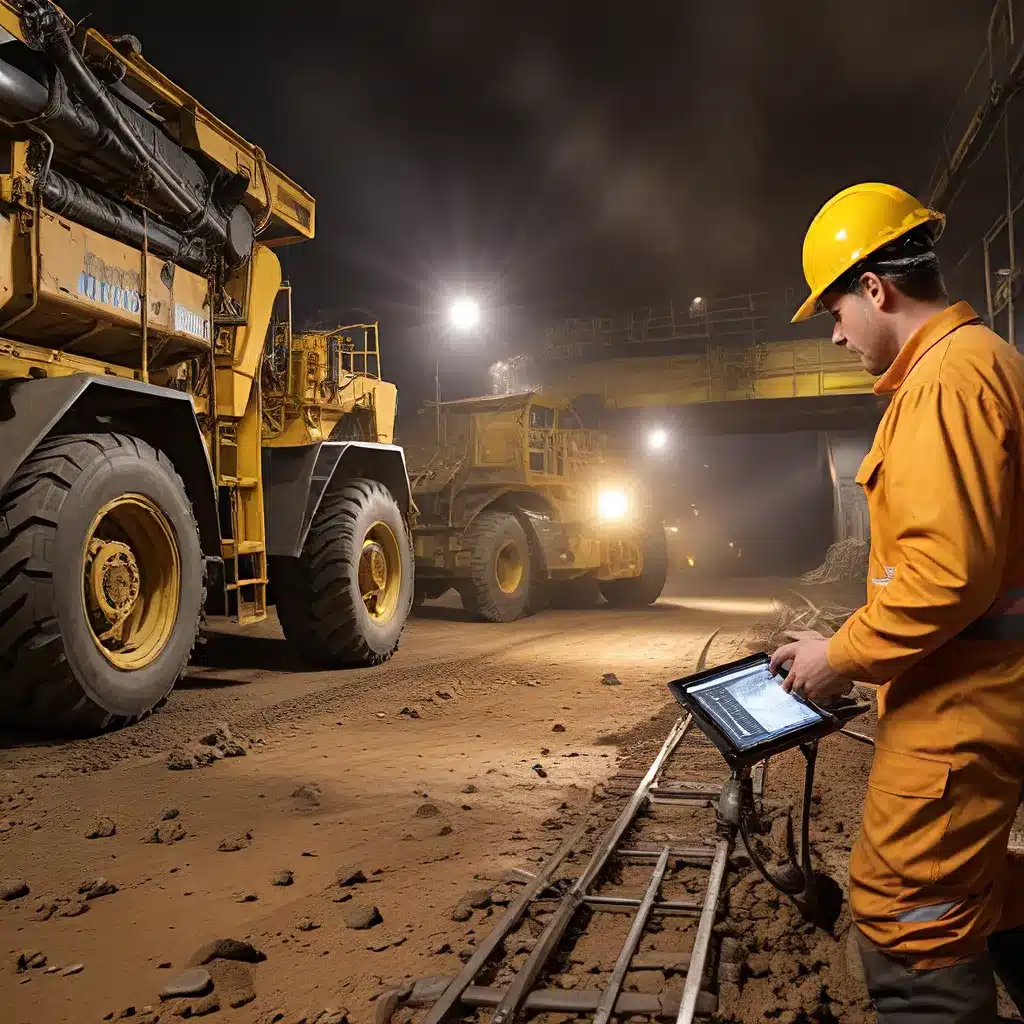
The mining industry is a critical sector that provides essential raw materials for various industries, including manufacturing, energy production, and construction. As the mining industry evolves to meet the demands of the Fifth Industrial Revolution, also known as Industry 5.0, the integration of advanced technologies, such as sensor networks and robotics, has become increasingly crucial. This article explores the concept of Robot-As-A-Sensor (RAAS) networks and their potential to revolutionize underground mining operations, enhancing safety, productivity, and sustainability.
Embracing the Era of Mining 5.0
The Fifth Industrial Revolution represents the current trends in advanced manufacturing technologies, emphasizing the importance of intelligent systems, collaborative robotics, and a greater focus on sustainability and resilience. In the context of the mining industry, this shift towards Mining 5.0 aims to increase the efficiency and productivity of mining operations, while fostering a more automated, safe, and sustainable working environment for both workers and the surrounding ecosystem.
Sensor networks and robotics play a pivotal role in this transformation, enabling mining companies to harness the power of data-driven decision-making and autonomous operations. Robots equipped with an array of vision-based and non-vision-based sensors can collect comprehensive data, supporting better decision-making and increasing the efficiency of mining operations.
Sensor Integration: The Backbone of RAAS Networks
The sensing capabilities of robots are at the heart of the RAAS network concept. These sensing units can be broadly classified into two categories: vision-based and non-vision-based.
Vision-based sensing leverages sophisticated imaging technologies, such as cameras and LiDAR, to capture and interpret visual data. This enables robots to discern their surroundings and navigate with precision, which is crucial for tasks like 3D mapping of underground tunnels and belt conveyor inspection.
Non-vision-based sensing, on the other hand, encompasses a range of technologies, including acoustic, thermal, proximity, and chemical sensors. This diverse array of sensors allows robots to gather a comprehensive spectrum of environmental data, enhancing their decision-making processes and overall operational efficiency.
The integration of these multifaceted sensing capabilities is the foundation upon which the RAAS network is built, providing the necessary data for seamless collaboration, real-time decision-making, and enhanced situational awareness in the challenging underground mining environment.
Wireless Sensor Networks: The Communication Backbone
While the sensing capabilities of robots are essential, the communication network that connects them is equally crucial for the success of the RAAS framework. Wireless Sensor Networks (WSNs) play a pivotal role in facilitating this connectivity, offering several advantages over traditional communication methods, such as Wi-Fi and cellular networks, in the context of underground mining operations.
WSNs are designed to be energy-efficient and scalable, allowing for flexible deployment and expansion to meet the growing needs of mining operations. The mesh networking capabilities of WSNs are particularly well-suited for underground environments, where the limited backhaul access and complex tunnel layouts pose significant challenges for conventional communication systems.
Research has shown that LoRa-based linear WSNs arranged along the mine tunnels can effectively address these challenges, providing reliable end-to-end communication and efficient message propagation in scenarios where direct backhaul access is limited.
Addressing the Challenges of RAAS Network Deployment
Realizing the full potential of RAAS networks in underground mining operations requires overcoming several critical challenges, including:
-
Scalability and Bandwidth Management: As the number of robots and sensors in the RAAS network increases, ensuring scalable communication protocols and efficient bandwidth utilization becomes paramount. Strategies such as dynamic power management, adaptive data rate, and real-time network optimization can help address these challenges.
-
Mobility and Routing: The dynamic and unpredictable nature of robot movements in underground environments necessitates the adoption of adaptive routing protocols, such as AODV, to ensure reliable data transmission and maintain network connectivity.
-
Communication Coverage and Latency: Extending the communication coverage and minimizing latency are crucial for enabling real-time decision-making and data exchange within the RAAS network. Integrating high-bandwidth technologies, such as Wi-Fi, with low-power WSNs, as well as leveraging edge computing and semantic communication techniques, can help address these challenges.
Enabling Technologies for RAAS Networks
To realize the full potential of RAAS networks in underground mining operations, several emerging technologies offer promising solutions:
-
Integrated Sensing and Communication (ISAC): ISAC enables IoT devices to perceive and connect, seamlessly integrating sensing and communication capabilities. This integration enhances the efficiency and effectiveness of RAAS networks by facilitating distributed sensing, data fusion, and real-time decision-making.
-
Edge Computing (EC): By processing data locally at the edge of the network, EC can reduce communication costs, optimize resource utilization, and enhance the reliability and security of RAAS operations. EC also enables advanced applications, such as predictive maintenance and geological data analysis.
-
Semantic Communication: This innovative approach prioritizes the transmission of meaning over raw data, improving the efficiency and relevance of communication within the RAAS network. When combined with EC, semantic communication can further optimize bandwidth usage and maintain the semantic integrity of messages in dynamic underground environments.
The Future of RAAS in Underground Mining
The integration of sensor networks and robotics in the form of RAAS networks holds immense promise for transforming the mining industry. By enhancing safety, productivity, and sustainability, the RAAS framework represents a significant step towards realizing the vision of Mining 5.0.
As the mining industry continues to evolve, the strategic deployment of RAAS networks, coupled with the advancements in ISAC, Edge Computing, and Semantic Communication, will be crucial in harnessing the full spectrum of benefits offered by these cutting-edge technologies. This multidisciplinary approach will not only improve operational efficiency but also pave the way for a safer and more sustainable future for underground mining.
By embracing the RAAS network concept, the mining industry can elevate the robustness and adaptability of its collaborative automation and real-time data sharing capabilities, ultimately mitigating human exposure to hazardous environments and optimizing operational workflows. As the industry continues to evolve, the integration of these transformative technologies will undoubtedly redefine the landscape of underground mining, setting new standards for safety, productivity, and environmental stewardship.